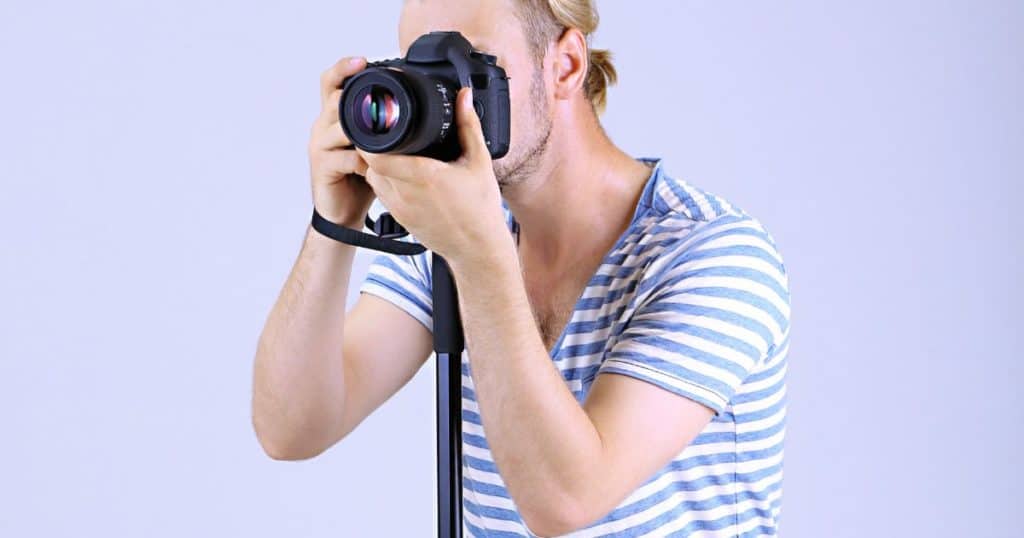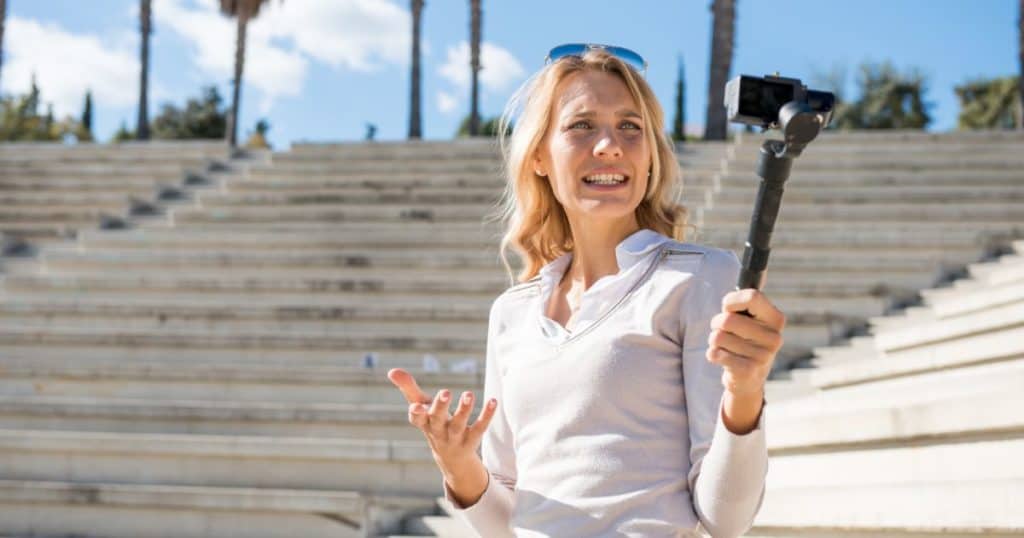A monopod is a simple yet effective photography tool that professional and amateur photographers use to stabilize their cameras. Monopods are commonly used for photographing sports events, wildlife, and video recording.
Monopods are also useful for reducing camera shake and fatigue during long shoots, as they provide a stable base for the camera and take the weight off the photographer's arms.
This article will answer the question of what is a monopod used for, describe the various applications and benefits, and provide tips for using one.
What Is a Monopod and How Does it Work?
A monopod is a single-legged support system stabilizing cameras while shooting photos or videos. Unlike a tripod with three legs, monopods are portable and easier to set up, making them ideal for photographers constantly on the go.
A monopod provides a single point of contact between the camera and the ground, creating a stable base for photographers to shoot from. A photographer can attach their camera to the top of the monopod using a mounting plate or screw. The monopod stabilizes, reducing camera shake and producing sharper images, especially in low-light conditions where slower shutter speeds are necessary.
What Is a Monopod Used For?

Here are a few benefits of using a monopod for photography and videography:
Helps in Low-Light Situations
Some events, like concerts or indoor weddings, need slower shutter rates than handheld shooting allows. You can increase the ISO (your camera’s sensitivity to light) to make up for this, but it may reduce overall image quality. A monopod offers the necessary support while still allowing you to be mobile and move around, making capturing sharp images in low light easier.
Supports Heavy Lenses/Camera Gear
Using a monopod can help support the weight of your camera gear, reducing the stress on your arms and shoulders and allowing you to shoot for extended periods.
Adds Stability When Shooting Video
A monopod can add stability and remove shakiness, resulting in better-quality video footage. A monopod also allows you to pan, tilt and rotate the camera while keeping it stable, to capture smooth, professional-looking footage.
Reduced Footprint
Unlike a tripod, which requires a wider base, monopods have a much smaller footprint. This makes them ideal for use in tight or restricted areas, such as crowded events or narrow walkways. The compact size of a monopod also makes it easier to transport and set up, especially when you're on the move.
Easy to Change Angles
By using a monopod, you can lift your camera above your head or hold it at an angle to capture unique shots. This is particularly useful in crowded areas where a tripod would be too bulky and difficult to maneuver. A monopod allows you to capture shots that would be impossible to get with a tripod.
Stabilizes Telephoto Lenses
You often need to shoot with faster shutter rates when using a telephoto lens and holding the camera than you do when using a wide-angle lens. A monopod can help shoot at slower shutter speeds while keeping the ISO low for overall image quality.
Mounting a telephoto lens on a monopod offers support and stability, allowing you to shoot at slower shutter speeds without the risk of the camera shaking.
Faster Setup and Mobility
Unlike tripods, monopods offer greater mobility and are faster to set up. They are ideal for shooting fast-paced action, such as sports events, where you need to move around and follow the action while still capturing sharp images.
Ways to Use a Monopod

While not as stable as a tripod, monopods offer more flexibility and mobility in movement and use, making them a popular choice for photographers on the go.
Here are some of the ways and tips for using a monopod effectively:
Shooting from the Front
One of the most common ways to use a monopod is to extend it in front of you by attaching your camera and extending the leg out. Adjust the height and angle of the monopod for the best shot. This technique mimics the stance of a tripod, creating a stable base for your camera.
Capturing Overhead Shots
To capture a shot from a higher angle, extend the leg of the monopod and hold it overhead. This technique captures a bird's eye view of a landscape or a large crowd. Ensure that your camera is secured to the monopod to prevent mishaps.
Panning
Another technique for using a monopod is to pan with your camera. This technique is ideal for capturing a subject in motion, like a bird or an athlete. Twist the monopod with one hand to match the speed of your subject while keeping the camera focused. Use the other hand to click the shutter.
Monopod vs Tripod: Which Is Better?
Both tripods and monopods have pros and cons, and the right choice depends on the photography type.
Here, we compare different aspects of monopods and tripods to decide which is better.
Stability
Tripods, with their three legs, are the most stable camera supports. They are ideal for long exposure shots – the camera can be placed on top and remains stable. In comparison, monopods reduce some camera shake but are not as stable as tripods.
Mobility
Monopods take up less space and are highly mobile, which makes them ideal for crowded venues and following action, such as shooting sports photography. They are easier to set up and take down, and are more travel-friendly since they are lighter than tripods.
Precision
Tripods provide more precision because they keep the camera fixed in one location. They are ideal for shooting macro photos, panoramas, and HDR photography.
Convertibility
Convertible tripods can be a good option for photographers who want the benefits of both tripods and monopods. They can easily switch between the two modes and are more travel-friendly than packing both on a photography trip.
Which is Better? Tripods vs Monopods
If mobility and sharp shots are a priority, then a monopod is your best option. A tripod provides stability for long-exposure photography, such as blurring a waterfall. If you need both, convertible tripods are a good option.
Endnote
So, what is a monopod used for? A monopod is a useful tool to enhance your photography skills and help you capture stunning images. It provides extra stability for your camera, reduces camera shake, and supports heavy camera gear, making it ideal for sports photographers and wildlife photographers.
By understanding the potential of a monopod and its various techniques, you can take advantage of its benefits and capture creative and professional-looking footage.
